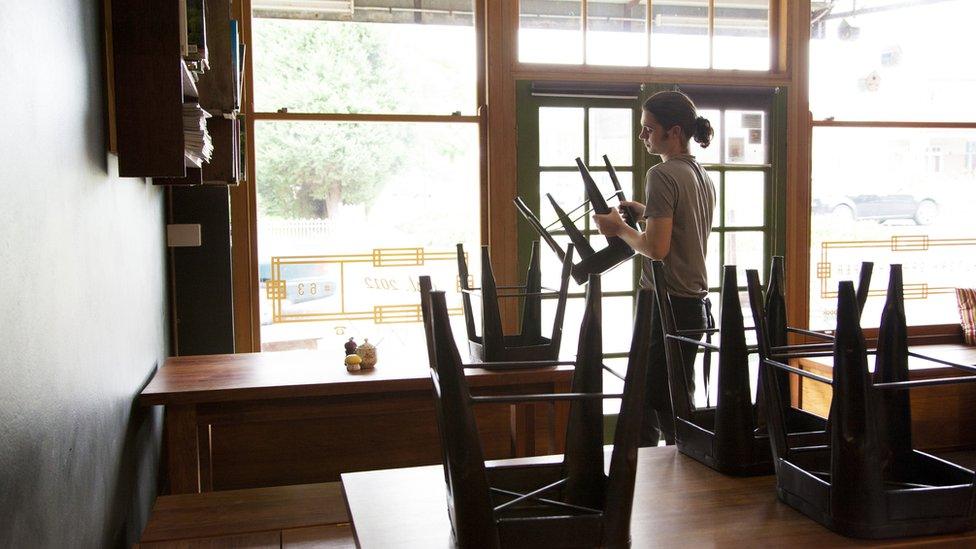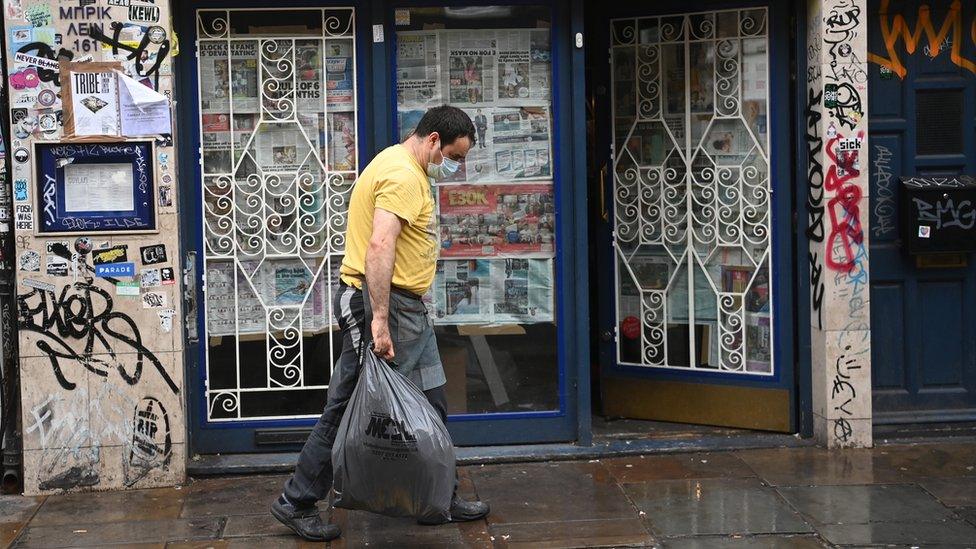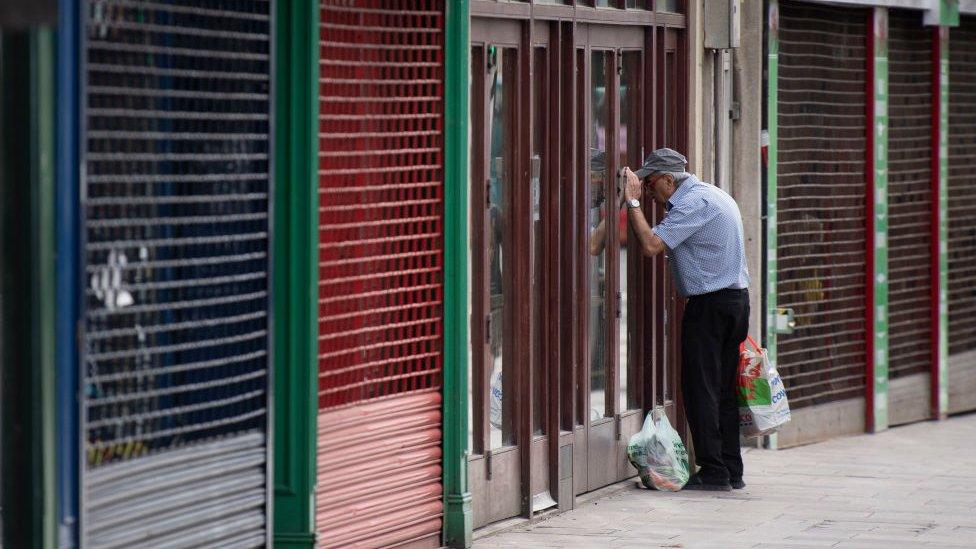Unemployment: Wales sees largest rise in rate across UK
- Published
- comments

The figures do not include workers on furlough
Unemployment in Wales for July to September leapt to 4.6%, an increase of 28,000 compared with April to June, the latest Office for National Statistics figures have suggested.
Wales saw the largest quarterly rise in the jobless rate out of any of the UK's nations or regions.
The UK's unemployment rate was 4.8%.
During August the UK government's Covid-19 pandemic furlough scheme began to reduce support paid to employers to pay workers.
Furloughed workers are counted as employed in the statistics.
Before the pandemic, Wales had seen low levels of unemployment.
The rate of people not available for work has also increased 1.1 percentage points - these are working age people who may be full-time carers or students, on long-term sick or have taken early retirement.
Across the UK, Wales has also seen the largest drop in the rate of people in employment - down 2.5 percentage points from 74.6% to 72.1%.
It suggests there were 42,000 fewer people working in Wales in the three months to September than between April and June, even though more businesses were open after the UK-wide lockdown.
Compared with last year, the employment rate is down from 73.9% to 72.1%.
Firms made more workers redundant in anticipation of the end of the furlough scheme, which was originally supposed to finish at the end of October.
It will now last until 31 March.
'No easy answer'

Steve Blundell hopes there will be demand for his skills in future, but for now there are no new job prospects
Steve Blundell from Chepstow worked for a technology research consultancy before he lost his job three weeks ago.
He said there was no prospect of a new job at the moment, and he does not qualify for the newly extended furlough scheme.
"If your job has already gone, or has been considered for redundancy because furlough was coming to an end, there's no help to be had," he said.
"There's no easy answer. Lots of people are falling through the cracks, and I'm worried about the economic situation for the future."
His specialism is changing business processes and automation, so he hopes there will be demand for his skills in future.
"It's the kind of work that isn't happening at the moment, and people like me are not in a position to start something new," he said.
What about furlough?

The unemployment figures do not include people who were furloughed
The Coronavirus Job Retention Scheme (JRS) - known as furlough - was brought in on 20 March to help employers keep on staff during lockdown.
The scheme meant the Treasury paid 80% of an employee's wages while they were not working, up to a maximum of £2,500 per person per month.
The support provided had been reducing since the beginning of August and was due to be replaced by the Job Support Scheme on 1 November.
On 31 October the chancellor announced the JRS was instead being extended and made more generous again, with the UK government paying 80% of employee wages, but with the employer covering pension and National Insurance contributions.
This latest set of labour market figures includes July, before the furlough scheme began to wind down its support.The Treasury said the numbers of jobs furloughed in Wales reached a peak in July of 378,400 - roughly 29% of eligible jobs.From 1 July, employers could apply for flexible furlough, meaning an employee could be furloughed for part of their time employed.By the end of July, 210,000 in Wales were on some form of furlough and more than 130,000 by the end of August. That represented around 10% of eligible Welsh employees, according to the latest Treasury statistics.

Analysis by BBC Wales economics correspondent Sarah Dickins
Today's figures make sober reading.
Despite furlough, Wales saw 42,000 leave their jobs during the summer.
It was a time when workplaces had opened up, and there were reports Wales' many holiday honeypots were bustling.
But these new figures from the ONS cast a shadow on that - jobs were going, and at a much higher rate than other parts of the UK.
Around half of those who have left employment are actively seeking work and count as unemployed.
Others are not available for work because they are caring for someone or are long-term sick or a full-time student.
From August, employers with furloughed staff began to pay more towards keeping them on their books. It could be that was as point at which employers decided to make staff redundant.
We must remember that these figures relate to the summer, and there have since been more blows to the economy with local restrictions, the Wales-wide "firebreak" lockdown, and the start of the month-long lockdown in England.
Their impact is expected to turn any economic recovery into reverse, and if this trend continues it looks as if there will be more job losses.
- Published10 November 2020

- Published15 September 2020

- Published15 September 2020

- Published30 September 2021

- Published12 August 2020

- Published11 August 2020
